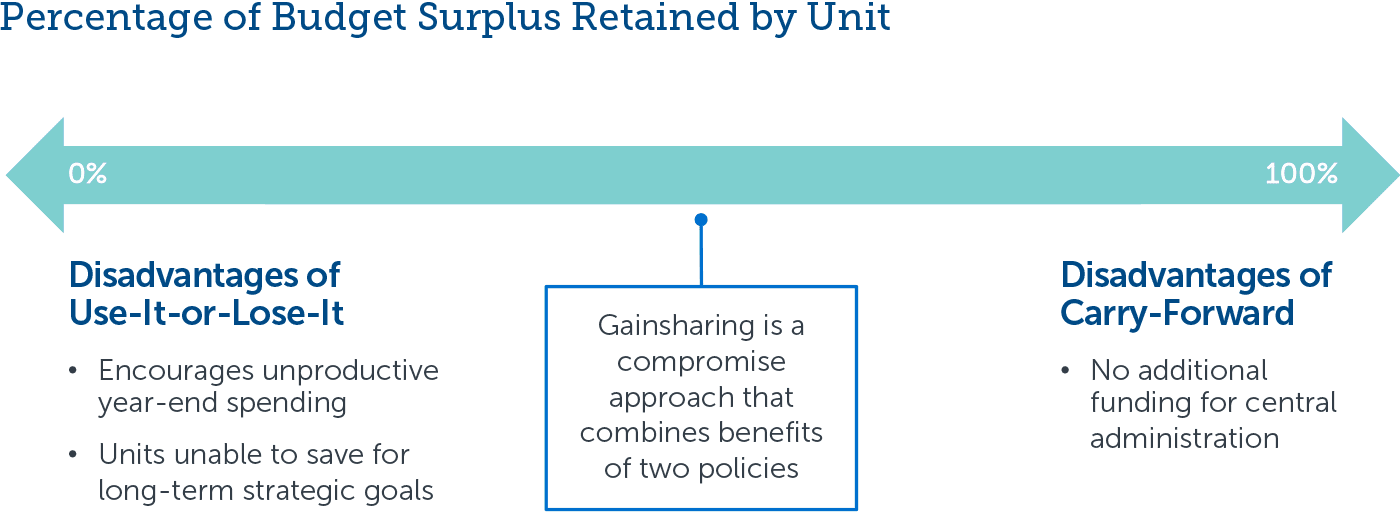Implement Gainsharing Agreements in Your Academic and Administrative Units
Higher education business leaders can use gainsharing agreements to incentivize more prudent spending and grow central strategic reserves. Under these agreements, units split any budget surpluses with central administration. This mitigates perverse incentives for units to either amass unnecessarily large reserves or squander every remaining budget dollar at year-end.

Gainsharing benefits both units and the institution and combines the advantages of two common, more extreme approaches to surplus management—use-it-or-lose-it and 100% carry-forward.
Because units retain a sizable portion of their surplus, they are incented to find cost savings and better steward resources. Likewise, because a portion of surplus returns to the center, the institution can grow much needed funds for larger strategic priorities.

The more common option for structuring a gainsharing model is to establish a fixed percentage of budget surplus that units will retain. The most successful gainsharing programs typically allow units to retain between 50% and 80% of surpluses.
Fifty percent is an important psychological marker for most unit leaders, who often need to retain a majority of savings to buy into the process. On the other hand, business leaders report that percentages above 80% leave the center with too little additional funding.
The second option is to establish a unique savings target that each unit must hit before gainsharing begins. This allows the center to dictate the funds it needs in advance, rather than waiting to see how much units save.

The best strategy for transitioning to a gainsharing program depends on how an institution currently manages unit surpluses. On one hand, leaders at institutions transitioning from a use-it-or-lose-it policy can largely “flip the switch” and transition to gainsharing immediately.
Because units will now retain a portion of money they previously returned to the center, faculty and staff typically accept the change to gainsharing.
On the other hand, leaders at institutions starting at 100% carryforward must be gradual and deliberate. They should pursue smaller, incremental changes that do not overwhelm or disconcert unit leaders or faculty.
This resource requires EAB partnership access to view.
Access the roadmap
Learn how you can get access to this resource as well as hands-on support from our experts through Strategic Advisory Services.
Learn More


